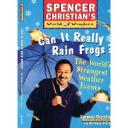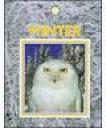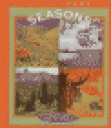The topic covered here is weather and seasonal changes. Content to be covered includes the changes and extremes in weather, how weather influences human and animal activity, identification of common weather phenomena, and seasonal changes and how they influence human and animal activity (VA Science SOL 2.6, 2.7). The resources in this post are directed at second grade students.
Below are some books that can either be read to students, or provided for students to read, as a supplement to weather and seasonal changes lessons.
 Can it Really Rain Frogs? The World’s Strangest Weather Events, by Spencer Christian and Antonia Felix.Illustrated by Abe Blashko and Jessica Wolk-Stanley. This book provides information about interesting and strange weather occurrences. It covers topics such as thunder and lightening, winds, clouds, rain, and how animals respond to weather. There are also experiment examples that could be used in class.
Can it Really Rain Frogs? The World’s Strangest Weather Events, by Spencer Christian and Antonia Felix.Illustrated by Abe Blashko and Jessica Wolk-Stanley. This book provides information about interesting and strange weather occurrences. It covers topics such as thunder and lightening, winds, clouds, rain, and how animals respond to weather. There are also experiment examples that could be used in class.
The Nature and Science of Spring, by Jane Burton and Kim Taylor. This book is part of the Exploring the Science of Nature series. This book completely focuses on Spring, and covers topics such as melting ice, spring rains, buds and flowers, lengthening days, and animal reactions, such as coming out of hibernation. This book has fantastic photography, and also includes a glossary and example activities and suggestions of other books to read on this topic.
 The Nature and Science of Winter, by Jane Burton and Kim Taylor. This is another book in the Exploring the Science of Nature series, focusing on Winter. This book covers topics such as snow, ice, dormant buds, insects and cold-blooded animal habits during winter, and winter flowers. More great photographs here, as well as activity examples, additional books to read, and a glossary.
The Nature and Science of Winter, by Jane Burton and Kim Taylor. This is another book in the Exploring the Science of Nature series, focusing on Winter. This book covers topics such as snow, ice, dormant buds, insects and cold-blooded animal habits during winter, and winter flowers. More great photographs here, as well as activity examples, additional books to read, and a glossary.
The Nature and Science of Summer, by Jane Burton and Kim Taylor. Also part of the Exploring the Science of Nature series. This book focuses on Summer, and includes topics such as dew, droughts, summer scents and colors, and animal behaviors. Excellent photography, as well as example activities, a glossary, and list of related books to read.
 Seasons, by Paul P. and Diane M. Sipiera. This book gives a detailed look at the Earth’s four seasons. Topics covered include understanding the time, what makes a season, changes during seasons, and seasons on other planets. The book has many photographs and diagrams, and also includes a section suggesting additional books and online resources and organizations to check out for more information.
Seasons, by Paul P. and Diane M. Sipiera. This book gives a detailed look at the Earth’s four seasons. Topics covered include understanding the time, what makes a season, changes during seasons, and seasons on other planets. The book has many photographs and diagrams, and also includes a section suggesting additional books and online resources and organizations to check out for more information.
Web Resources:
Below are some great websites for kids to visit to enhance their learning on this topic.
Fossweb Air and Weather Module. Here students can play a game relating to seasonal weather changes. They will select appropriate clothing for an animated bear based on the temperature displayed on the thermometer.
Primary Games: The Four Seasons. Here, students can select one a season and select from a variety of crafts, coloring pages, and games. Examples include mazes, matching games, word search, and puzzles.
Sheppard Software: The Seasons-Games and Activities for Kids. This website also allows children to select a season and choose from a variety of activities, including matching games, seek and finds, and coloring pages. There is also a computerized paint program that allows students to paint season-related images however they choose, and print them to display.
Earth TV. This website has streaming video of various locations around the world. I thought it could be valuable and interesting to show students video of a place that would be experiencing the opposite season that we are currently in. For example, you could show students video of Australia or New Zealand and have students observe how their weather is different from ours.
The Weather Channel Kids. This is a branch of the Weather Channel’s website, aimed specifically at kids. Students can get local forecasts, learn about weather careers, visit an online glossary and encyclopedia about weather, and play a variety of games. Games include jigsaw puzzles, mazes, seek and finds, and word search. There is also a portion of the website where students can watch a video clip on hurricanes.
Resources for Teachers:
Below are some additional teacher resources.
Scholastic: Haystack Lesson Plan. Here is a neat lesson plan idea that allow students to see changes grass goes through as the seasons change.
Scholastic: Printables. Here is a Four Seasons activity printable. This activity asks that students circle the appropriate season based on a short statement, such as “leaves turn red, orange, and yellow” or “some animals hibernate.”
Earthquake Activity from Fema.gov. Here is a neat activity that shows students how earth moves and can damage buildings during an earthquake. A pan of Jell-O (made ahead of class) is used, and the pan is tapped to demonstrate an earthquake. Sugar cubes are used to represent buildings. Students can see how the Jello-O shakes and moves when tapped, and see what happens to the sugar cube buildings. Students can have the Jello-O as a treat once activity is finished!
Four Seasons Lesson Plan Idea, from the Lesson Plan Page. This activity involves reading students a story about the four seasons, and then having them sort pictures representing the seasons. Students will then use the images to make a foldable.
